Buda's historic Király baths likely to be renovated with help of Turkish-Hungarian foundation
April 18. 2024. – 03:19 PM

“Attention! The bath towels should only be used for drying off! Anyone who uses their towel for other purposes or forcibly soils it is damaging the property of the people!”
– a sign hung in the lobby of the Király baths decades ago reads in gilded capital letters. Whether the stern warning achieved its purpose in protecting the towels cannot be known, but the building, which to this day remains the property of the people, is in a seriously dilapidated state and hasn’t operated for the past four years.
The last time the almost 500 hundred year-old Király baths underwent complete renovation was seventy years ago, and it shows. According to the condition assessment reports, the building should have been renovated in 2003, but was allowed to operate under a temporary permit until 2018, which was verbally extended for the period between 2018 and 2020. In the meantime, the operator BGYH Zrt. launched a tender for the restoration design, and in 2019 it looked as if the renovation would be starting soon. Then the Covid-19 epidemic hit and the doors were closed for good.
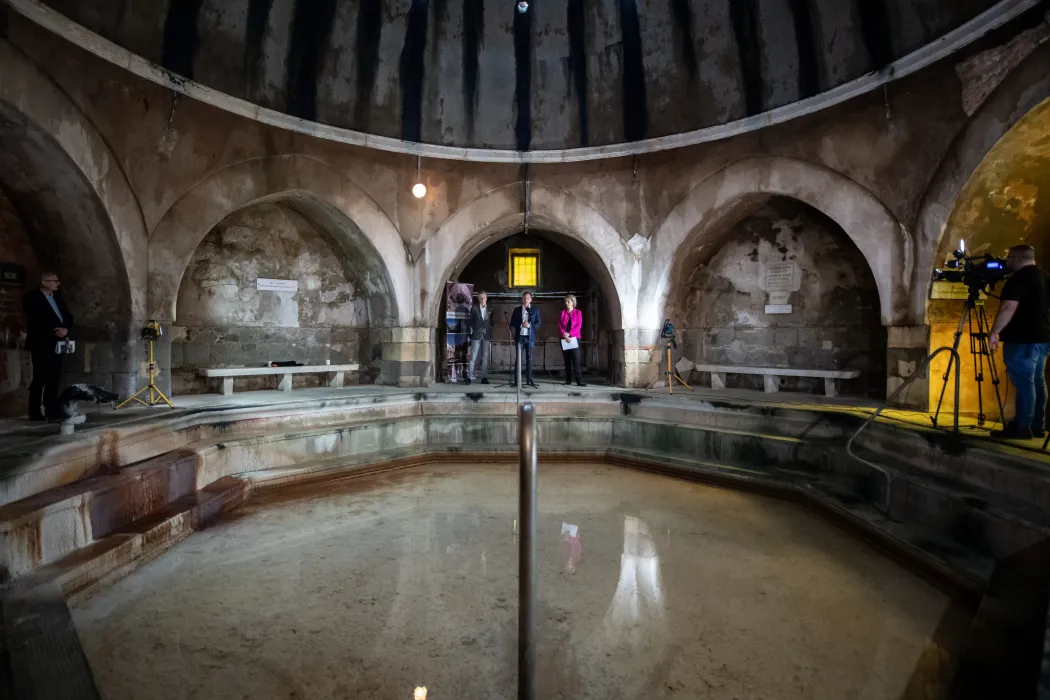
Now there is a glimmer of hope seeping in from behind the shutters because, as Ildikó Szűts, CEO of the Budapest Spa and Thermal Baths Ltd. (BGYH Zrt) and Gergely Őrsi, mayor of the capital's second district announced, the state might find some money for the reconstruction in partnership with the Turkish-Hungarian Gül Baba Foundation. To this end, the baths management has had the plans for renovation, originally valued at HUF 6-7 billion slimmed down to HUF 4.5 billion by the architectural firm that won the contract in 2017. (Click here to see the visual plans.)
This was essentially all that was announced, and we immediately wrote to the Gül Baba Türbéje Foundation to ask about their intentions and where they were in the preparations, since they were not present at the briefing. While we await their reply – which we will of course update this article with – let us take a tour of the once lively bath that has seen better days.

We begin our tour in the oldest part of the complex, the Turkish baths. The construction of the baths was begun in 1565 by Arslan Pasha of Buda, but as he was forced to depart to the other world by the arrival of the silk cord, his successor, Mustafa Sokoli ended up completing the work. The baths were built within the city walls so that even with a siege going on, the Turks could still enjoy bathing in the hot water of the springs a kilometer and a half away, which was brought in by pipes made of larchwood.
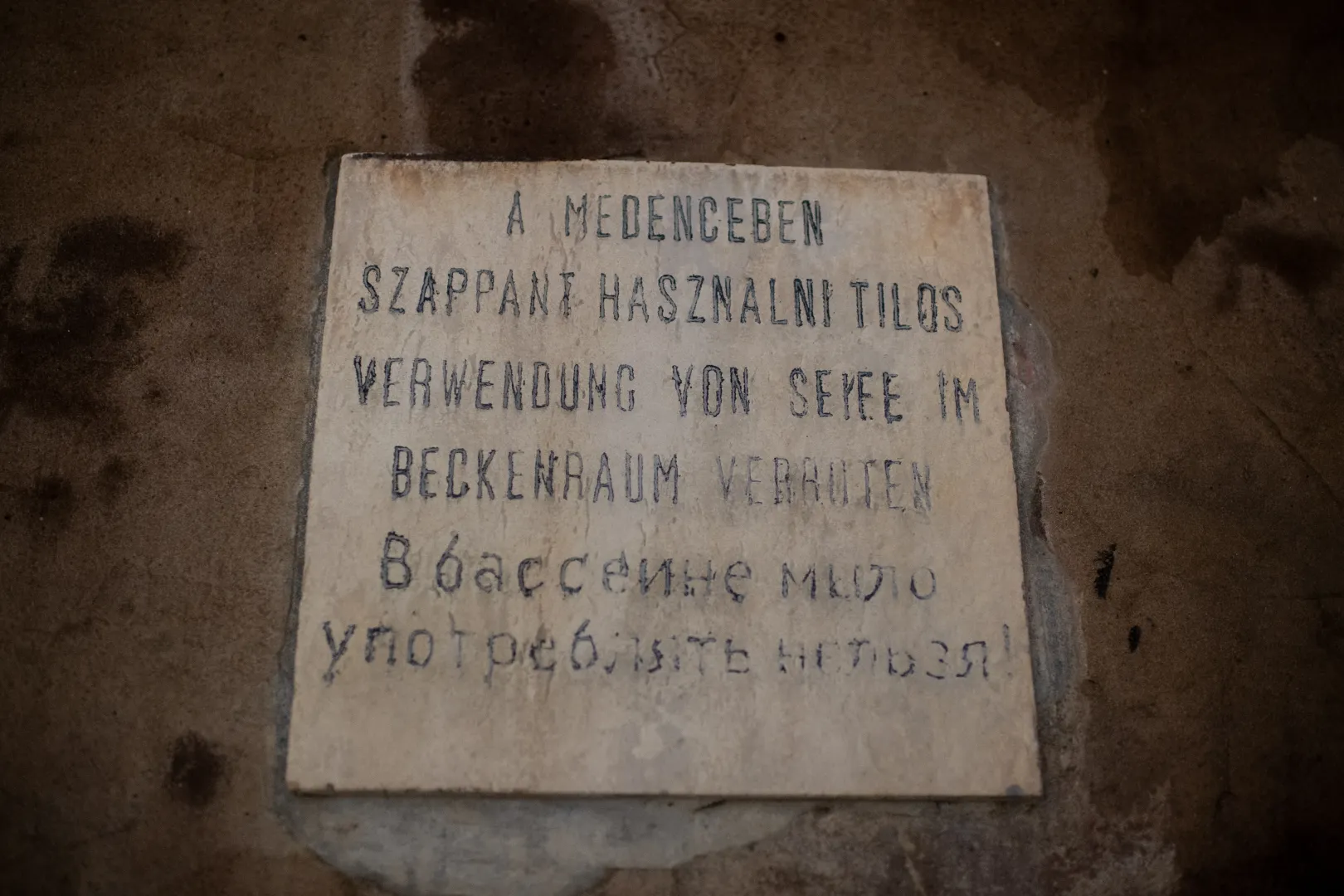
The thermal water containing aggressive, highly corrosive compounds still comes from outside, straight from the Lukács Baths. By now, the piping system has become almost completely corroded, and the black vapour dripping in streaks from the miniature windows of the dome look like the Tel Aviv sky during a rocket attack. (The dome was in fact torn apart by a stray cannonball in 1945.) The water in the central pool remains ankle-deep to ensure the necessary humidity level.
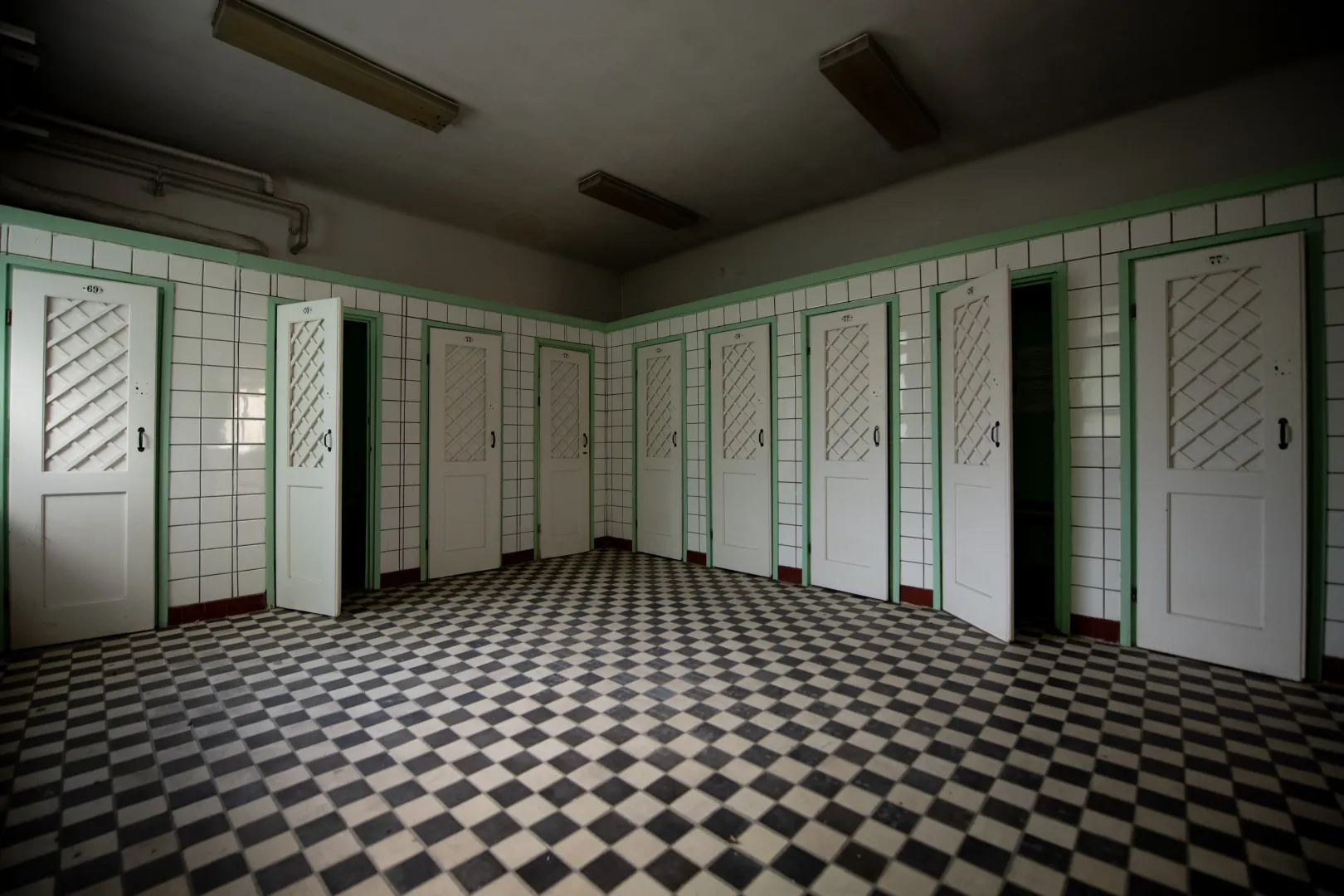
With its seventies-style interior, the light-blue tiled massage room on the first floor is a strange mix of a hospital ward and a power station control center, where the neatly arranged rows of lockers peacefully coexist with a large electrical switchboard. In the central area, instead of an operating table, a massage table desperately awaits the bathers who no longer come, while a table decorated with colourful mosaic pieces gathers dust in the corner.
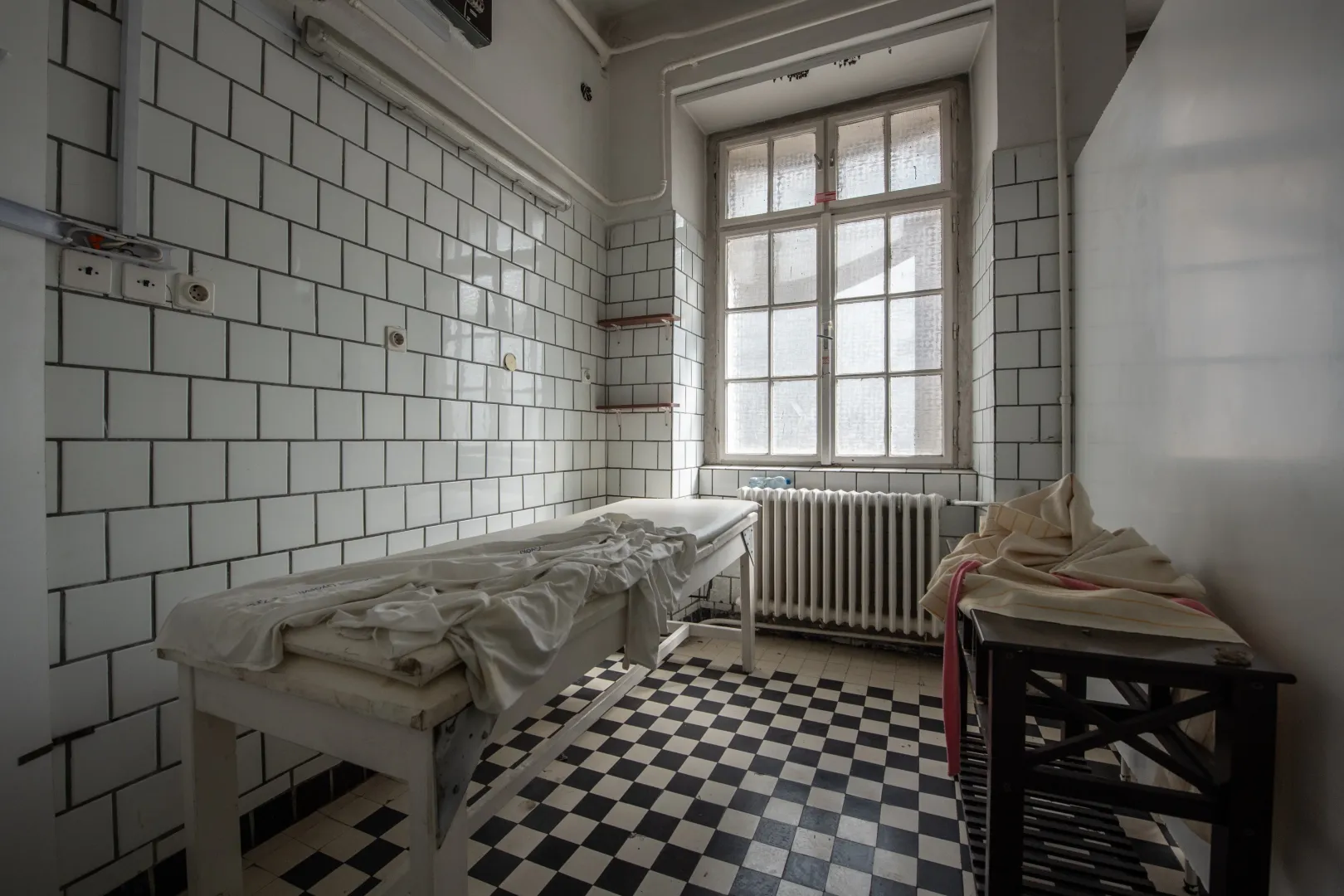
We descend from the realm above via a spiral staircase, next to which – in the spirit of eclecticism – two Doric columns support the ceiling. These may be a reference to part of a Roman military road which was found intact in the courtyard during the post-World War II reconstruction. The baroque canopy roof was demolished in the 1950s. It had been added to the original Turkish bath along with the neoclassical façade when the imperial bath was expanded in the 1700s. The name of the baths dates back to the 1700s, having been named after the König family, who owned it at the time (The German "König" meaning "Király" in Hungarian – TN).

Bizarre little rooms of unknown purpose open from the hallway that leads to the dressing room. They mostly resemble therapy rooms for serial killers in a mental hospital. The walls are black, the windows barred, with a Persian rug and a yellow garden chair placed in each, along with an empty coat stand. Empty, no doubt, because the sign says the spa 'does not accept responsibility for objects placed on the coat stands'.

We enter the courtyard from the arched, open-plan downstairs massage room, decorated with oriental motifs. The statue of a bathing damsel damaged by the passing of time stands next to a stack of rusty deckchairs. The statue is missing a small piece. The nude holds a bowl-like object over its head, perhaps to protect it from the blazing sun, perhaps from pigeons, but in the end, a maintenance worker with a more practical mindset has found that the whole composition is best used as a hanger for electrical cords.
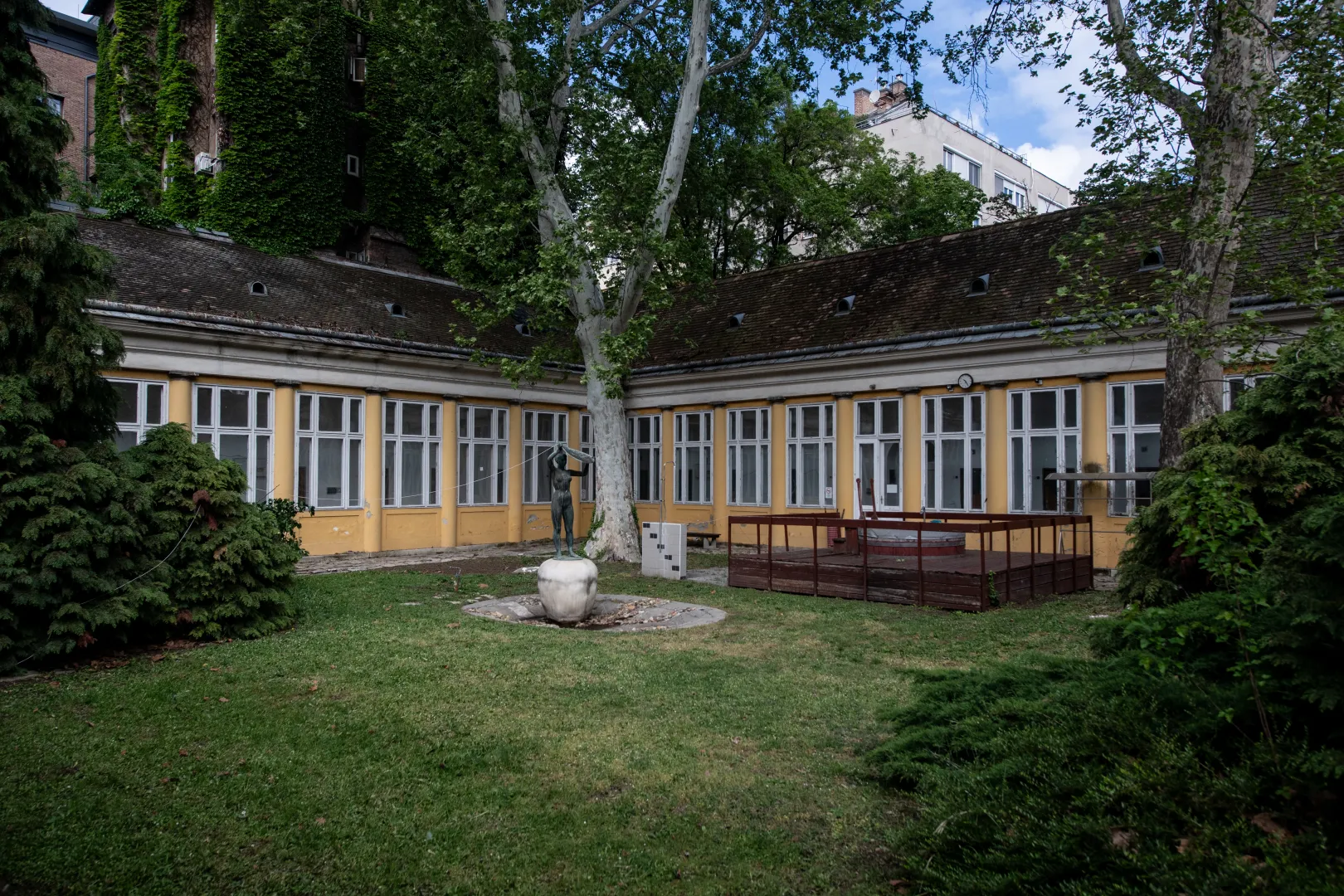
We cross to the outside courtyard, just in time to see the director of the spa management drive off in her service vehicle from the parking lot marked Boss Lady. I make eye contact with a man strolling by, presumably the janitor, who is quick to inform me that the sign had of course been made for a former madam director.

We are practically the last to leave the briefing, after which the gates of the baths are closed again. But if the hopes of the bath management and the district end up being realised, it won't be for long. The Gül Baba Foundation – or rather, its Turkish chairman, businessman Adnan Polat, who is on good terms with Hungarian Prime Minister Viktor Orbán – has managed to raise 2.5 billion forints for the renovation of Gül Baba's Tomb before, so why couldn't the same happen with the Király baths?
But who is Adnan Polat?
In the past, Adnan Polat has sponsored the Kurultáj "tribal gathering", and he also represents the Hungarian-Turkish Gül Baba Friendship Association, which carries out the Turkish national mission. He is also the president of the Gül Baba Türbéje Foundation, which was established by the Hungarian state (and is funded by the Ministry of Foreign Affairs). The Hungarian government operates the Hungarian Institute in Istanbul, the Consulate General in Istanbul and the local branch of Eximbank in Turkey in an office building owned by Polat.
The Turkish businessman and several members of his family have recently been granted Hungarian citizenship. Along with other Turkish oligarchs, Adnan Polat now controls a significant portion of the Hungarian energy market. As we have previously reported, in a year or two, they will likely be supplying electricity to county-sized areas.
Polat and his circles are also the ones behind the development of a new district in the Közvágóhíd area of Pest, which the government has, of course, declared to be of key importance for the national economy. They are also involved in the development known as Duna Pearl. The site on Pozsonyi út in Pest used to be the headquarters of the central offices of the communist party's youth organization and later became the office building of K&H, but currently there are apartments being offered for sale. Half of the project company (PD Real Estate Development Kft.) is owned by Polat, while his partner is the Turkish Dereli family, which has invested in solar parks in Jász-Nagykun-Szolnok and Vas counties.
For more quick, accurate and impartial news from and about Hungary, subscribe to the Telex English newsletter!